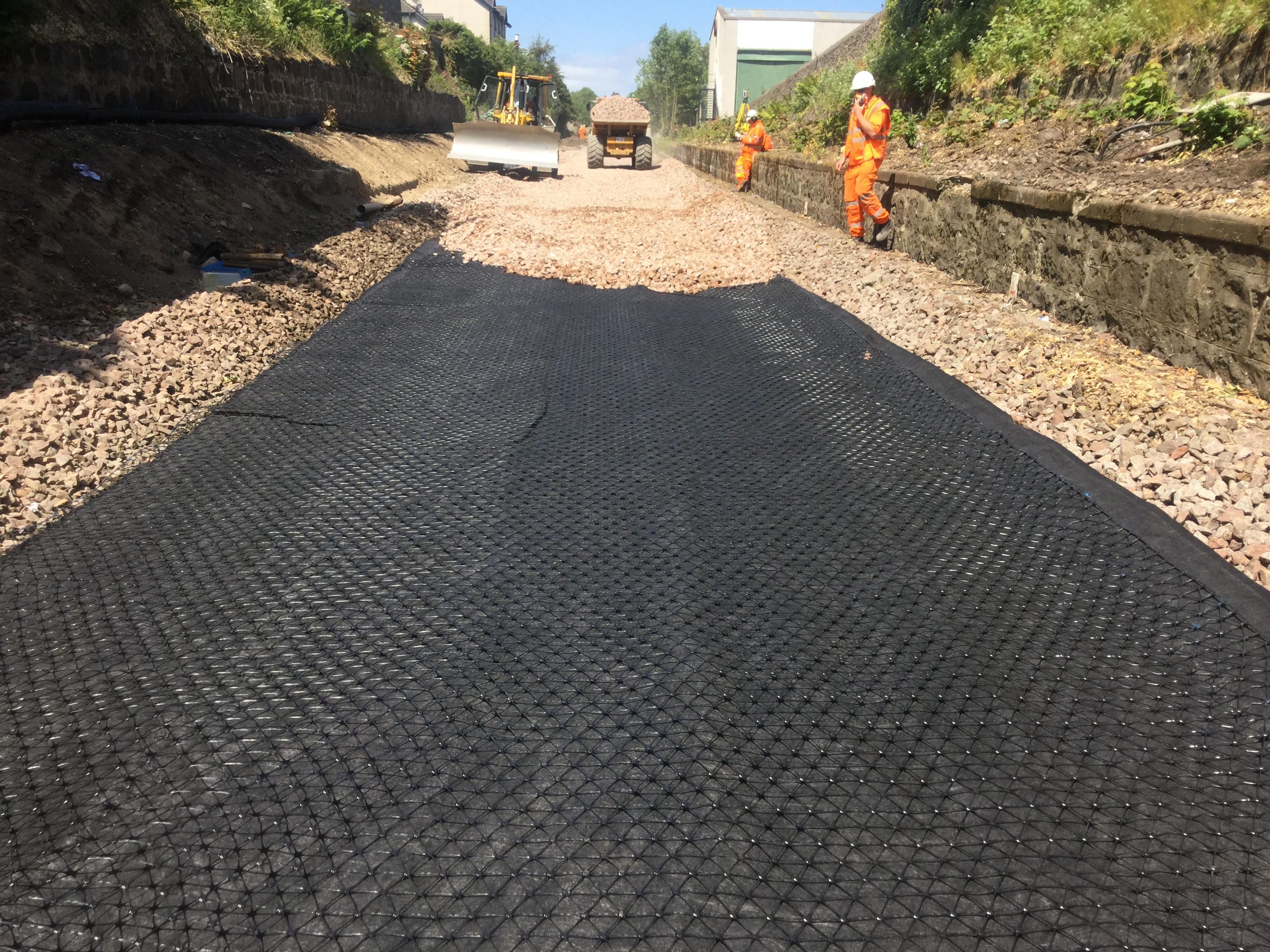Civil Engineering Works in Rail Trackbed
by Dr Kasia Zamara, on November 11, 2021
The background
In May 2021 the UK Government published its long-awaited white paper, setting out transformative plans for railways in Great Britain. While much of the proposed change is to be organisational, there are ambitious plans to regenerate and expand the network. The Government commits to delivering “a rail system that is the backbone of a cleaner, greener public transport system, offering passengers a better deal and greater value for money for taxpayers”.
More specifically the plan’s high level outcomes include:
- financial sustainable railways
- cleaner, greener railways
- bold, new opportunities for rail freight
- increased speed of delivery and efficient enhancements
These are outcomes that are almost certainly being pursued by rail network operators globally. The question is: what does this mean for those of us involved with construction and maintenance of the network infrastructure?
The goals
Governments and Rail Authorities globally are striving to expand and operate their networks in a sustainable and climate-neutral way - yet with improved economic and operational efficiencies. Added to this are requirements for increased resiliency from the inevitable effects of climate change. This may seem like another round of wanting ‘more for less’: more capacity, more, speed, more revenue, for less money, less disruption and less carbon emissions.
However there is a growing international desire to achieve more, as well as a greater need to reach net-zero carbon targets, and do so with economic efficiency. The technologies that can be utilised to meet the operational, sustainability and resiliency objectives of the next 10-15 years are with us now: they have to be if they are to be deployed within that timeframe. Beyond that, there are opportunities to develop and enhance new technologies – products, materials, techniques, that will further enable change to meet these objectives.
Sustainable technology
Geosynthetics have an important and increasing part to play in rail infrastructure. Geosynthetic solutions already developed, in some instances over decades, need to be more rapidly and widely deployed to enable efficiency, sustainability and resilience targets to be met. Geogrids in particular have been well proven and are already accepted by rail networks across the globe, however their use can be more universally adopted as a replacement to traditional materials and methods in pursuit of efficiency and sustainability goals.

Track ballast mechanically stabilised with Tensar geogrid at Crewe Green Link Road, UK
Efficiency in construction and maintenance
Geogrids are being used in embankments and earthworks to accelerate construction, reduce earthwork volumes, reduce land-take and control settlements. They enable the use of recycled and otherwise ‘waste’ materials as fill, without compromising stability. They can increase resiliency by maintaining stability under seismic loading and in areas subjected to flooding.
Trackbed foundations have been stabilised by geogrids to increase bearing capacity, reduce the need for excavation and replacement of weaker soils and control differential settlements, reducing construction time, materials consumption and costs. Track ballast stabilised with geogrids is extending maintenance cycles, reducing costs and disruption and delays.
Sustainability
By reducing the required thickness of track foundations over weaker soils, as well as enabling the use of recycled materials, geogrids contribute to reduced consumption of non-renewable materials and the carbon costs associated with the quarrying and transport of large volumes of aggregates.
Resiliency
Stabilising trackbed with geogrids increases stiffness and bearing capacity. These structural improvements can reduce the impact on trackbed performance in areas susceptible to flooding, freeze-thaw cycles and changed rainfall patterns, impacting soil moisture and strength. Geogrid reinforced soil structures for embankments, bridge approaches and abutments have proven to be highly resilient to seismic events and differential settlement caused by variations in ground conditions.

Tensar geogrids being used for mechanical stabilisation of track ballast at Network Rail's Highways Enhancement Project, UK
Making a difference, NOW...
All of these applications for geogrids have been tested, trialled and proven in real use. These solutions are available now and are being used in rail networks. Engineers understand that in order to achieve the high-level objectives discussed above, it is not good enough to simply continue with traditional methods and technologies. Every decision in design, construction and maintenance has to be tested against the new targets. Tools that help deliver efficiency, sustainability and resilience have to be employed now.
The future
Technologies that will take us beyond the 10-15 year horizon are being developed now, and there are some exciting prospects. Companies such as Tensar are investing further in products, research and testing, to take us beyond today’s capabilities. Safety remains paramount, and rigorous testing and monitored trials will be essential. Close collaboration between researchers, manufacturers, construction companies and clients will lead to faster development and implementation.
Tensar Academy Rail Symposium
Tensar’s current and future ethos, goals and products align with the government’s transformative plans for railway networks, and we would like to invite you to a free online symposium, to identify how we can all support the rail industry moving forward. Globally recognised speakers from the rail industry and academia (see below) will share their knowledge and expertise on rail trackbed design, construction, maintenance and monitoring.
They will give insight into the challenges and identify solutions to overcome these issues. Case studies, full scale live line monitoring programmes, various engineering solutions and design techniques will be presented and discussed during the event.



.jpg?width=400&height=400&ext=.jpg)